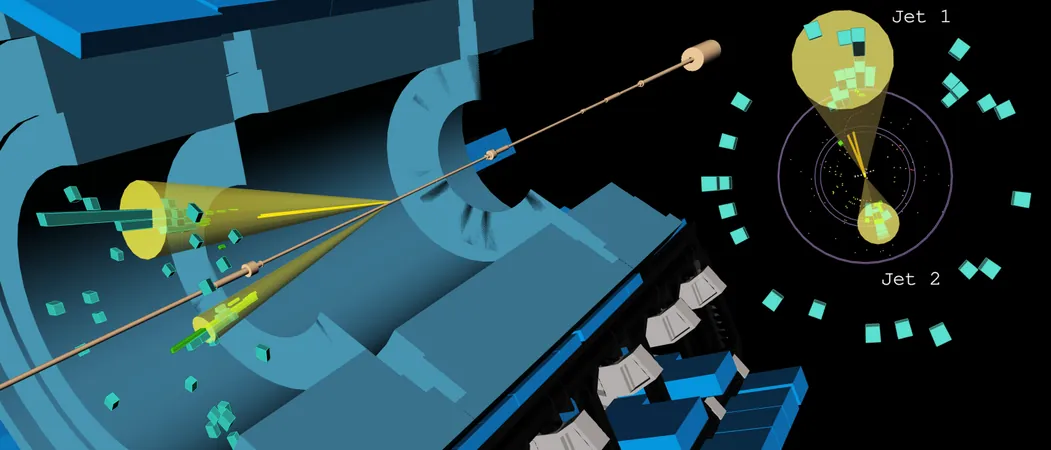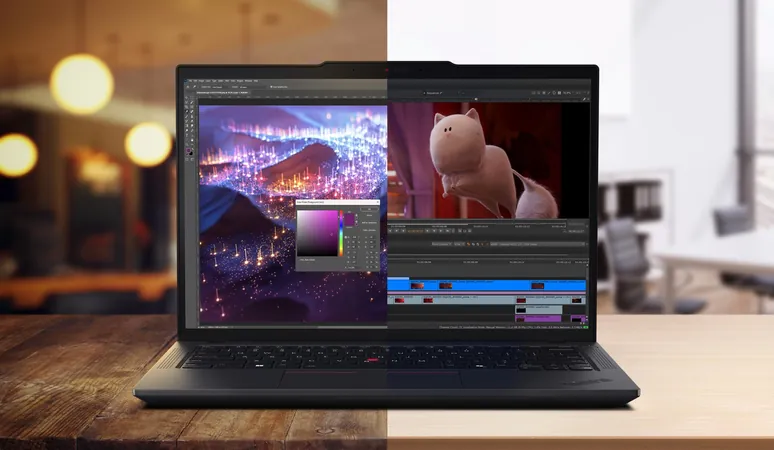
Groundbreaking Discoveries at Quark Matter 2025: What ATLAS Revealed
2025-04-14
Author: William
Unveiling the Mysteries of the Universe
Last week, the ATLAS Collaboration wowed physicists at the Quark Matter 2025 conference in Frankfurt, Germany, unveiling groundbreaking findings that could reshape our understanding of the universe. With over a thousand experts in attendance, the conference highlighted the latest advancements in high-energy heavy-ion physics, showcasing experimental revelations from the Large Hadron Collider (LHC).
Revolutionary Insights into Quark-Gluon Plasma Flow
ATLAS researchers presented pioneering measurements from heavy-ion data during LHC Runs 2 and 3. One of the most stunning revelations focused on the radial flow of quark-gluon plasma (QGP) formed in lead-lead collisions, a state of matter akin to what existed just after the Big Bang. While anisotropic flow has been studied extensively, the newfound focus on radial flow opens exciting possibilities. The team conducted detailed analyses of charged particles, revealing that radial flow behaves independently of particle momentum and collision centrality, with significant correlations indicating its collective nature. This discovery positions ATLAS at the forefront of probing the intricate dynamics and properties of QGP, particularly its bulk viscosity—a vital characteristic that measures how the liquid-like QGP interacts with moving fragments.
Ultra-Peripheral Collisions: A Glimpse into the Strong Force
ATLAS didn't stop there! They also explored the intriguing world of near-miss collisions—where particles barely touch. These ultra-peripheral collisions, harnessing intense electromagnetic fields, have previously led to promising discoveries like light-by-light scattering. Now, they’ve shed light on strong force dynamics, reporting the production of J/ψ mesons in these encounters. By studying events where a photon creates quark-antiquark pairs, the researchers gained invaluable insights into Quantum Chromodynamics (QCD), the theory describing the strong force. Their innovative techniques using the ATLAS Transition Radiation Tracker allowed them to analyze J/ψ meson distributions across vast rapidity ranges, unveiling complexities of nonlinear QCD dynamics.
Decoding Energy Loss in High-Energy Jets
One of the most captivating aspects of QGP is how high-energy jets of quarks and gluons lose energy as they traverse it. ATLAS researchers unveiled a significant advance in measuring jet quenching, focusing on large-radius jets made from smaller ones. By investigating jet substructure through angular separation and momentum sharing, they revealed that jets with wider separation experienced more severe suppression. Their findings suggest fascinating transitions around specific angular separations, providing fresh constraints on theoretical models governing energy loss in the extreme conditions of QGP.
Charting New Frontiers
These revelations underscore the extraordinary capability of the ATLAS experiment in uncovering the fundamental workings of heavy-ion collisions. As new questions emerge, the research not only enriches our understanding of the early universe's matter behavior but also propels further inquiries into the nature of our world.









 Brasil (PT)
Brasil (PT)
 Canada (EN)
Canada (EN)
 Chile (ES)
Chile (ES)
 Česko (CS)
Česko (CS)
 대한민국 (KO)
대한민국 (KO)
 España (ES)
España (ES)
 France (FR)
France (FR)
 Hong Kong (EN)
Hong Kong (EN)
 Italia (IT)
Italia (IT)
 日本 (JA)
日本 (JA)
 Magyarország (HU)
Magyarország (HU)
 Norge (NO)
Norge (NO)
 Polska (PL)
Polska (PL)
 Schweiz (DE)
Schweiz (DE)
 Singapore (EN)
Singapore (EN)
 Sverige (SV)
Sverige (SV)
 Suomi (FI)
Suomi (FI)
 Türkiye (TR)
Türkiye (TR)
 الإمارات العربية المتحدة (AR)
الإمارات العربية المتحدة (AR)